Inside the Seasonic X-Series
Firstly, we see a return of a Sayno Denki fan that firstly featured in the Seasonic M12-D. This fan isn't quite so powerful though, as it's only rated at 0.13A not 0.39A the M12-D required. Accordingly, it's (on paper) far more quiet: it doesn't even spin-up until the PSU reaches 20 per cent load, and even then Seasonic claims the fan produces only 16dB up until 50 per cent load. Above that load, the sound level is unspecified.Seasonic brands this fan control system as 'Silent Fan Control²', but as it reacts to current draw not temperature, we suspect that the full load noise to be significantly higher than it needs to be.
We previously pressed Seasonic on this point, who claimed that basing fan speed on temperature readings is always inaccurate because a probe can only measure a single area; tying fan speed to current draw, Seasonic claims, is necessary for the life preservation of the PSU.
Again, we suspect a customer's desire is different to what Seasonic is promoting: quietness always figures highly in user requests, even if Seasonic has the lifetime of its product in mind.
One thing we won't dispute is the quality of the fan: the dual ball-bearings and fan balance are phenomenal. There's very little frictional resistance, and almost no vibration when spinning the blades.
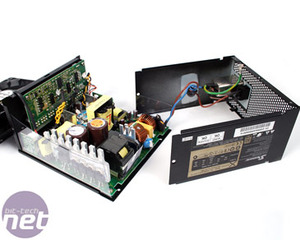
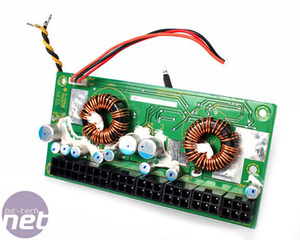
The 3.3V and 5V DC-DC converter PCB
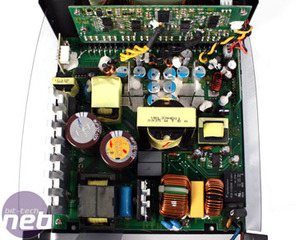
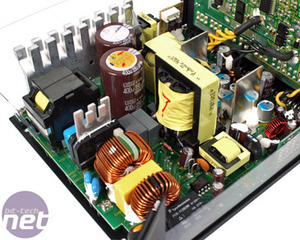
Taking apart the X-Series requires the removal of six screws, and also voids your warranty.
The biggest change in the X-Series is the way Seasonic addresses the DC-DC output in the unit. The major 12V outputs are all soldered to the PCB because Seasonic claims it's better to control the quality of power here - it lowers resistance and therefore heat production and efficiency loss compared to wiring it all up to a second PCB. That said, a second PCB is still used, but only for peripheral connectors (SATA and Molex) and it features its own DC-DC converter for 3.3V and 5V too.
Inside the 750W X-Series is a single 12V rail capable of 62 Amps. In addition, there are two Nippon Chemicon main capacitors, and more Nippon Chemicon solid-polymer aluminium-capped capacitors that are common on modern motherboards. There are only a few standard capacitors used in mostly non-essential areas.
What's impressive is the sheer lack of cooling inside the PSU: unlike in other PC products, tiny heatsinks don't represent a cheap PSU, but rather one that simply doesn't generate enough heat to require extensive cooling. To put that another way, if there's little in the way of cooling in a PSU, it's not creating a lot of waste heat, which means it's more efficient.
Seasonic's X-Series is available in 650W and 750W models - this is the wattage range that most people request. However, at around £135 inc. VAT for the 750W, it's (as expected) more expensive than Seasonic's £115 M12D and alternative products such as the £106 Corsair HX750W, although marginally cheaper than OCZ's £150 Z-Series 850W (since OCZ doesn't sell a 750W). We expect many to favour the cheaper Corsair, given the brand reputation, although we will still reserve judgement until we test the PSUs ourselves.
Availability of Seasonic's X-Series is expected to be from early November, and are likely to be distributed via Nanopoint into the usual resellers, such as Scan, CCL Online and Overclockers, among others.

MSI MPG Velox 100R Chassis Review
October 14 2021 | 15:04




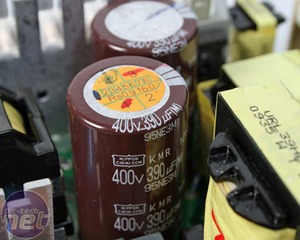
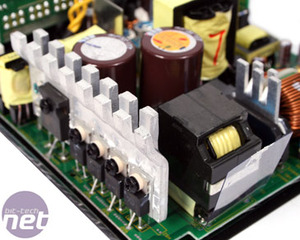
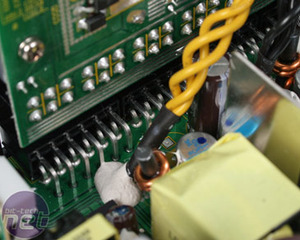
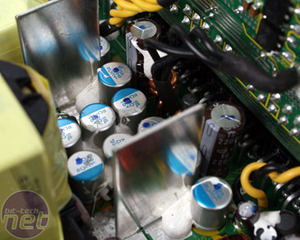







Want to comment? Please log in.